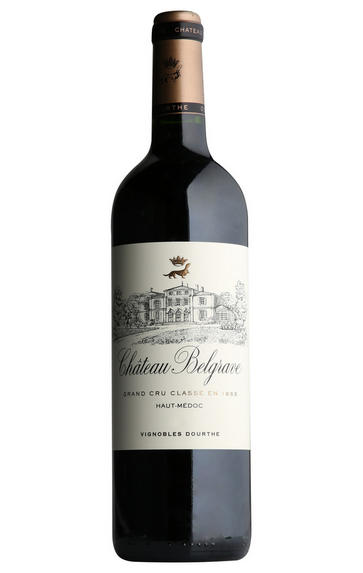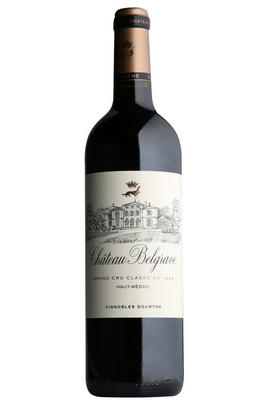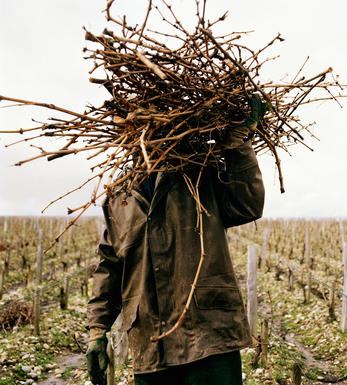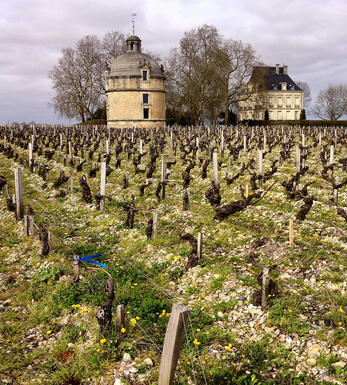
2022 Château Belgrave, Haut-Médoc, Bordeaux

Critics reviews
Jane Anson, janeanson.com (May 2023)
Jancis Robinson MW, jancisrobinson.com (May 2023)
About this WINE

Chateau Belgrave
Château Belgrave, classed as a 5ème Cru Classé in the 1855 Classification, was a run-down property producing fairly mediocre wines until 1980. Salvation came in the form of the Bordeaux firm, Dourthe, which bought Belgrave and immediately renovated the cuverie and cellars, as well as extensively replanting the vineyards. By the mid 80s, cult oenologist Michel Rolland was consulting and the subsequent rise in quality has been meteoric.
Belgrave is situated in Saint-Laurent, which is just outside the St-Julien appellation, and there are 55 hectares of vineyards, planted with Cabernet-Sauvignon (40%), Merlot (35%), Cabernet Franc (20%) and Petit Verdot (5%). The wine is matured in oak barriques, 50% new, for between 15 and 18 months.
Belgrave produces sleek, stylish and harmonious clarets that, while difficult to resist when young, amply reward cellaring for up to 10 years.

Haut-Medoc
Despite being as visually unprepossessing as the rest of the Médoc (despite its grandiose châteaux) this large red-wine appellation of Haut-Médoc is home to some of the world’s greatest wines. Its 4,500 hectares of vineyards form a largely continuous strip that follows the Gironde from St Seurin-de-Cadourne, just north of St Estèphe, to Blanquefort in the northern suburbs of Bordeaux.
All the great communes of the Left Bank fall within its boundaries: Margaux, St Julien, Pauillac and St Estèphe, as well as the up and coming Moulis and Listrac. These are labelled under their own, more illustrious and expensive appellation names. Châteaux labelled simply as Haut-Médoc rarely reach such heights, but nevertheless offer consistently good quality and offer some of the best value in Bordeaux.
Haut-Médoc wines tend to be firm and fine with generous fruit and a nice minerality – what many would consider ‘classic Claret’. They come from loftier vineyards and offer higher quality and more complexity than those labelled simply as ‘Médoc’. Almost all wines are a blend of the principal varieties – Cabernet Sauvignon, Merlot and Cabernet Franc – which helps producers hedge their bets if the slightly capricious climate causes one variety to fail. Small amounts of Petit Verdot, Malbec and even Carmenère are also used.
The higher proportion of sand and gravel to the south tends to produce finer wines, while the heavier clay and gravel north of Margaux yields sturdier examples. The best Haut-Médocs are found north of Ludon, a village just below Margaux. These include five classified Growths: Third Growth Ch. La Lagune, underperforming Fourth Growth Ch. la Tour Carnet and Fifth Growths Ch. Cantemerle, Ch. Camensac and Ch. Belgrave – as well as a number of fine Cru Bourgeois. Ageing ability varies but the lesser wines are usually delicious after three to four years, lasting around a decade, while the Cru Classés have a drinkability window of around six to 15 years.
Recommended Châteaux (labelled as Haut-Médoc): Ch. Beaumont, Ch. Belgrave, Ch. Cantemerle, Ch. Peyrabon

Cabernet Sauvignon Blend
Cabernet Sauvignon lends itself particularly well in blends with Merlot. This is actually the archetypal Bordeaux blend, though in different proportions in the sub-regions and sometimes topped up with Cabernet Franc, Malbec, and Petit Verdot.
In the Médoc and Graves the percentage of Cabernet Sauvignon in the blend can range from 95% (Mouton-Rothschild) to as low as 40%. It is particularly suited to the dry, warm, free- draining, gravel-rich soils and is responsible for the redolent cassis characteristics as well as the depth of colour, tannic structure and pronounced acidity of Médoc wines. However 100% Cabernet Sauvignon wines can be slightly hollow-tasting in the middle palate and Merlot with its generous, fleshy fruit flavours acts as a perfect foil by filling in this cavity.
In St-Emilion and Pomerol, the blends are Merlot dominated as Cabernet Sauvignon can struggle to ripen there - when it is included, it adds structure and body to the wine. Sassicaia is the most famous Bordeaux blend in Italy and has spawned many imitations, whereby the blend is now firmly established in the New World and particularly in California and Australia.


Buying options
Add to wishlist
Description
Château Belgrave is on the St Laurent/St Julien border, separated from Château Lagrange by a small stream. This is a good source of honest, overachieving wine, and one of increasing finesse. This year winemaker Frédéric Bonnafous opted to co-ferment his Cabernet Sauvignon and Merlot; the wine is suitably well integrated. There are appealing notes of cassis and sandalwood, and the palate is deep without any bitterness, while the tannins are muscular and solid. This looks like it will develop complexity in the barrel and then in the bottle. Drink 2027-2038.
Score: 16/20
Berry Bros. & Rudd (April 2023)
wine at a glance
Delivery and quality guarantee